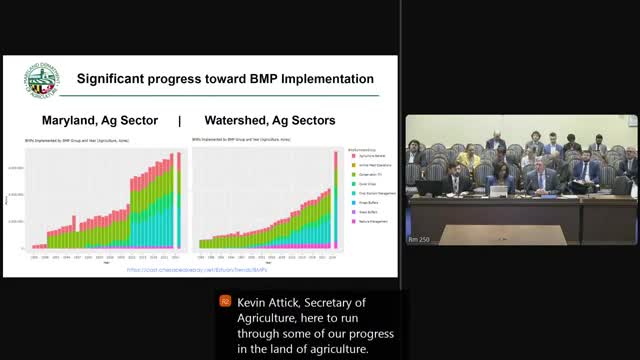Maryland launches LEAF program to incentivize eco-friendly farming practices and bay restoration
January 29, 2025 | Environment and Transportation Committee, HOUSE OF REPRESENTATIVES, Committees, Legislative, Maryland
Thanks to Scribe from Workplace AI , all articles about Maryland are free for you to enjoy throughout 2025!

This article was created by AI using a video recording of the meeting. It summarizes the key points discussed, but for full details and context, please refer to the video of the full meeting. Link to Full Meeting
One of the key topics was the success of Maryland's agricultural initiatives, particularly the implementation of cover crops. These practices not only benefit farmers by improving soil quality and crop yields but also play a crucial role in preventing runoff into local waterways. Officials reported that Maryland has met or exceeded many of its environmental goals, with 70% of the 20,000 conservation practices established remaining effective over several years.
The introduction of the Leaders in Environmentally Engaged Farming (LEAF) program was another highlight. This initiative, part of the Governor's Bay Legacy Act, aims to incentivize farmers to adopt environmentally friendly practices. By assigning values to various conservation efforts, the program encourages farmers to engage in practices that benefit both their operations and the environment. This innovative approach is expected to foster a culture of sustainability within the agricultural community.
Additionally, the meeting addressed the importance of modernizing stormwater management regulations and strengthening partnerships across the state. The Department of Environment emphasized its commitment to reducing pollution at its source and improving wastewater treatment facilities, which have seen significant investments in recent years. These upgrades are crucial for achieving the state's environmental targets, particularly in reducing nitrogen discharges into the Bay.
Overall, the discussions underscored Maryland's proactive stance in addressing environmental challenges while supporting its agricultural economy. The collaborative efforts between state agencies, farmers, and conservation partners are paving the way for a healthier Chesapeake Bay and a more sustainable future for Maryland's agricultural sector. As these initiatives progress, they promise to enhance both the ecological and economic well-being of the community.
Converted from ENT Committee Session, 1/29/2025 #1 meeting on January 29, 2025
Link to Full Meeting
Comments
View full meeting
This article is based on a recent meeting—watch the full video and explore the complete transcript for deeper insights into the discussion.
View full meeting